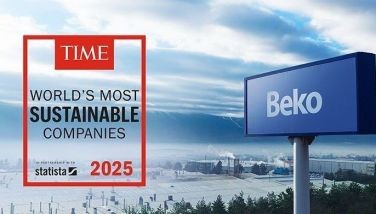Design and trends for 2016 and beyond
Autodesk is changing the way the world is designed and made. We track and drive significant design technology trends to make sure that our customers have the best tools to design and make, and are equipped for the future. Here are some of those trends that are keeping Autodesk and our customers busy and intrigued about the future of making things.
Construction
1. Buildings will be manufactured, not built. Imagine a 57-story tower built in just 19 days. That’s what China’s Broad Sustainable Building (BSB) did. Constructed at a pace of three stories per day, the tower includes 800 apartments, 19 atriums, and office space for 4,000 people. Means of physical production are changing with easier access to complex and offsite production methods bringing cost down and pushing quality and value up. This has happened in pockets, but now that surge is really taking off. New “making” techniques such as additive manufacturing and 3D printing, and soon robots, driverless dozers, CNC-controlled technologies, and even laser scanning for field verification will become common sights on the construction site. In fact, signs suggest that robots might be as important to construction, eventually, as people.
2. Infinite computing and the construction site. Build the rules for a project into an algorithm and harness the power of infinite computing to automatically explore thousands of design and commercial possibilities to land on the best solution. This is what’s known as generative design. Imagine using this capability to level the playing field when given, say, six weeks to submit a response to an aggressive single-stage design-and-build engagement. Just punch in the client’s specification and dial in your level of desired margin, contingency, and supply-chain partners, and then watch as the options drop out.
3. The digitization of construction. With a $700 drone and a one-button experience in Recap, anybody will be able to map anything on a site or city scale in real time including getting daily progress reports, producing fresh maps, and even assessing the amount of energy the building consumes. More companies will also use gaming technology like the Stingray game engine to create immersive experiences for non-technical stakeholders so they can provide input on architectural designs and explore ‘what if’ situations for complex projects like hospitals or train stations.
Manufacturing
1. Lights-out factories. Factories that do not need humans’ physical presence to run properly are no longer mere science fiction. The most well-known “lights-out” manufacturing facility is probably Fanuc in Japan, where robots not only produce other robots, but they turn off the airconditioning and heat. While this approach isn’t relevant to every business, almost any manufacturer can benefit from automating certain steps in the manufacturing process, stabilizing labor costs, increasing throughput and quality, and lowering scrap rates and field failures.
2. A mixed reality workspace for industrial designers. Technologies like Hololens – an amazing wearable, holographic computer that allows you to overlay 2D and 3D objects in your real-world living and work space – will change the way industrial designers collaborate. When combined with 3D design tools, you have an industry-changing piece of technology. Right now, this is being aimed primarily at the manufacturing sector with projects like ‘FreeForm’, a proof of concept by Microsoft and Autodesk.
3. Everyone can be a designer. Product companies don’t just want your feedback anymore; they want you to be a part of the design from the get-go. Take the example of FirstBuild, a partnership between GE and Local Motors, which aims to “invent a new world of home appliances by creating a socially engaged community of home enthusiasts, designers, engineers, and makers who will share ideas, try them out, and build real products to improve your life.” Now imagine integrating Internet of Things (IOT) capabilities into these products and delivering services on top of them, and you quickly understand the opportunity and imperative for companies to stay connected with consumers.
FirstBuild is also manufacturing designs in a microfactory, a growing trend that’s all about incredibly rapid prototyping, fabrication, and assembly – all under one roof.
Media & Entertainment
1. From VFX to VRX. Virtual Reality (VR) is so far beyond the two-dimensional, detached experience of the majority of our visual entertainment that it’s able to tap into our more instinctive behavior. Users may be sitting in a chair but their headset is delivering heightened sensation and an immersive experience. How virtual reality effects (VRX) will change the media and entertainment world will depend on how many headsets are sold commercially, but it’s also worth considering that there are almost no artists and specialists who are trained in VR. Everyone currently working in VRX trained themselves on the tools in the last 12 months. This has big implications for next-generation talent, and is the inevitable evolution of visual effects.
2. Post-production as a service will become delocalized and international. Post-production will become less bound by traditional facilities in the way that distribution has freed itself from retail stores. It will be spun up and down as needed and use tools as services when and where they want them. Over the next five years, we should see the industry change as new start-ups work to disrupt incumbents by spinning up quickly to complete projects and winning them (and as the incumbents adapt to this new competitive threat).
In conclusion, we are seeing a convergence of how things are designed and made. Every industry is facing disruption and a degree of democratization. The confluence of hardware, software and materials – with innovation in all three areas happening simultaneously – along with the connectedness of people, changes the rules of the game. Now, anybody can take down a titan.
Teddy D. Tiu is Country Manager for Autodesk
- Latest





















